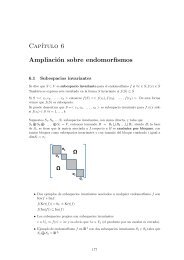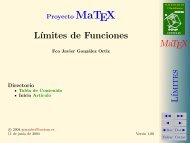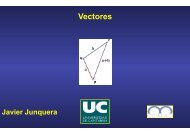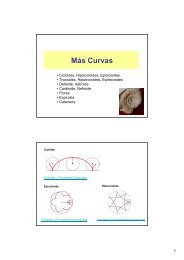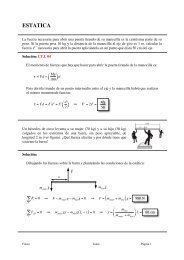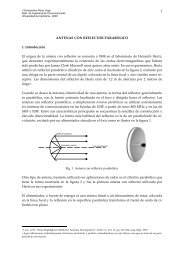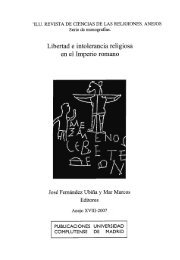Estimators based in adaptively trimming cells in the mixture model
Estimators based in adaptively trimming cells in the mixture model
Estimators based in adaptively trimming cells in the mixture model
You also want an ePaper? Increase the reach of your titles
YUMPU automatically turns print PDFs into web optimized ePapers that Google loves.
have used a light one (u = 0.1) <strong>in</strong> <strong>the</strong> examples <strong>in</strong> this section. Moreover, unless o<strong>the</strong>rwise stated, we<br />
start with an <strong>in</strong>itial trim of 50% of <strong>the</strong> data and <strong>the</strong> f<strong>in</strong>al region conta<strong>in</strong>s 95% of <strong>the</strong> po<strong>in</strong>ts <strong>in</strong> <strong>the</strong> sample.<br />
We want to remark that <strong>the</strong> solution provided to Example 2.1 by <strong>the</strong> t <strong>mixture</strong> <strong>model</strong> is similar to<br />
that obta<strong>in</strong>ed with our method. This often happens for symmetrical contam<strong>in</strong>ation, where both methods<br />
generally show a good performance.<br />
Example 3.1 The first example is a variation of Example 2.1 obta<strong>in</strong>ed by chang<strong>in</strong>g <strong>the</strong> 20 contam<strong>in</strong>at<strong>in</strong>g<br />
data for ano<strong>the</strong>r 20 po<strong>in</strong>ts which constitute a well concentrated contam<strong>in</strong>ation aris<strong>in</strong>g from a uniform<br />
distribution on <strong>the</strong> square [0.5, 1.5] × [−8, −7].<br />
Figure 2: Plots of <strong>the</strong> 95% ellipses of <strong>the</strong> true distribution (th<strong>in</strong> ones) and <strong>the</strong> estimated distributions<br />
for Example 3.1.<br />
Figure 2 shows <strong>the</strong> behavior of <strong>the</strong> different methods applied to <strong>the</strong> new contam<strong>in</strong>ated data set.<br />
The graph on <strong>the</strong> right provides <strong>the</strong> solution obta<strong>in</strong>ed through our method, while <strong>the</strong> plot on <strong>the</strong> left<br />
side shows <strong>the</strong> behavior of <strong>the</strong> estimations provided by <strong>the</strong> EM algorithm for <strong>the</strong> normal <strong>mixture</strong> and t<br />
<strong>mixture</strong> <strong>model</strong>s (which <strong>in</strong> fact almost co<strong>in</strong>cide).<br />
In this example, <strong>the</strong> (bad) behavior of EM for <strong>the</strong> t <strong>mixture</strong> <strong>model</strong> is similar to that EM for <strong>the</strong><br />
normal <strong>mixture</strong> <strong>model</strong>. In fact, it is <strong>the</strong> MLE procedure which is unable to handle <strong>the</strong> problems aris<strong>in</strong>g<br />
from <strong>the</strong> presence of some concentration of outliers.<br />
•<br />
Example 3.2 Here we analyze <strong>the</strong> behavior of <strong>the</strong> methods <strong>in</strong> a 10-dimensional problem. The <strong>mixture</strong><br />
is composed of <strong>the</strong> product measure of a 8-variate normal distribution with zero mean and covariance<br />
matrix equal to 8 times <strong>the</strong> identity matrix on IR 8 and a <strong>mixture</strong> of three bivariate normal distributions<br />
with parameters<br />
π i = 1/3, i = 1, 2, 3; µ T 1 = (−9, 0), µ T 2 = (1, 5), µ T 3 = (3.5, −3.5);<br />
9




